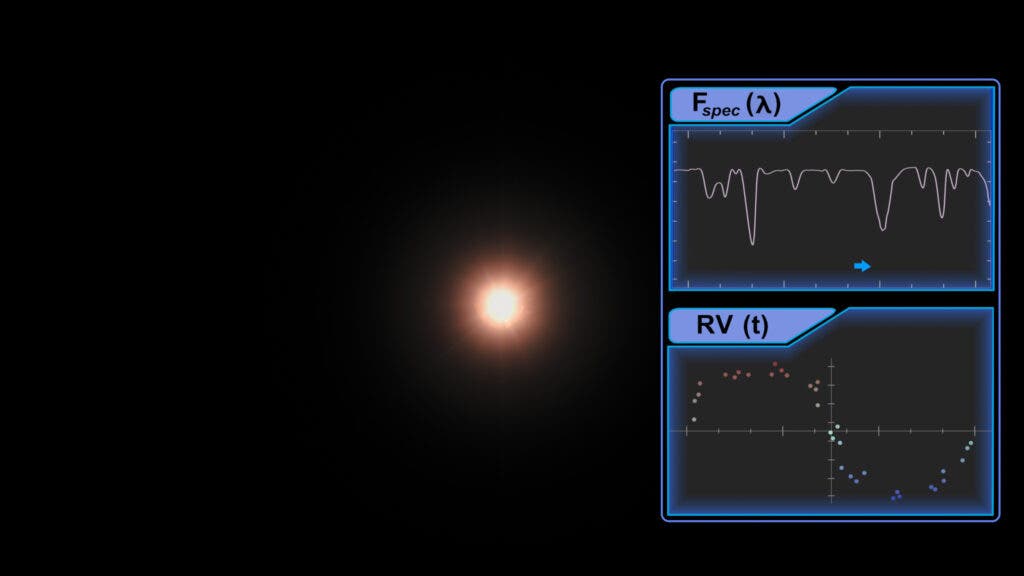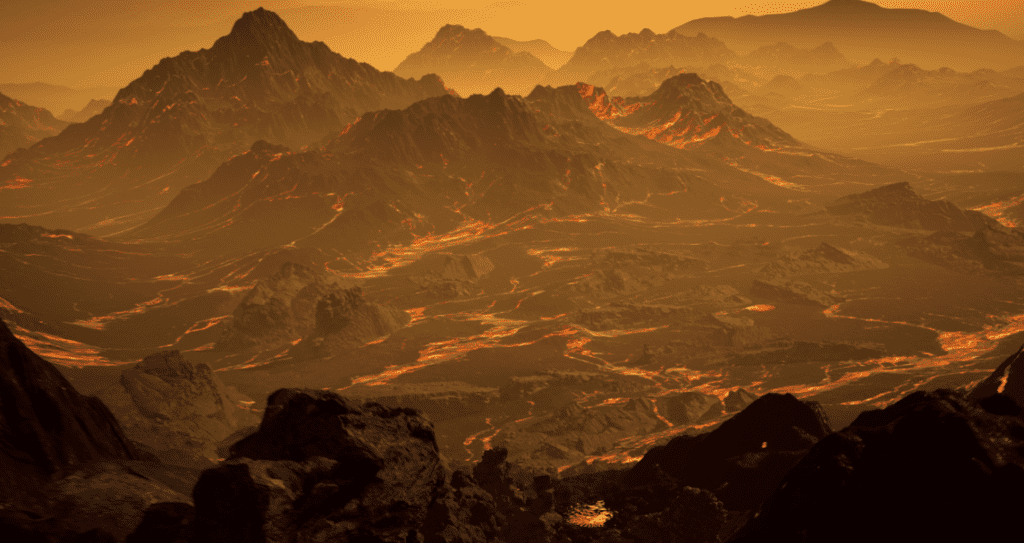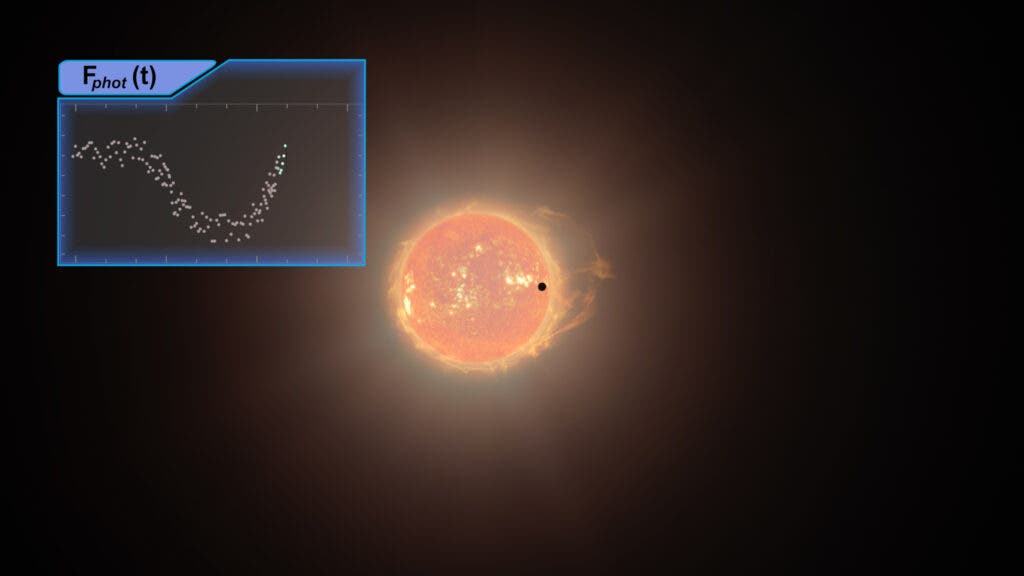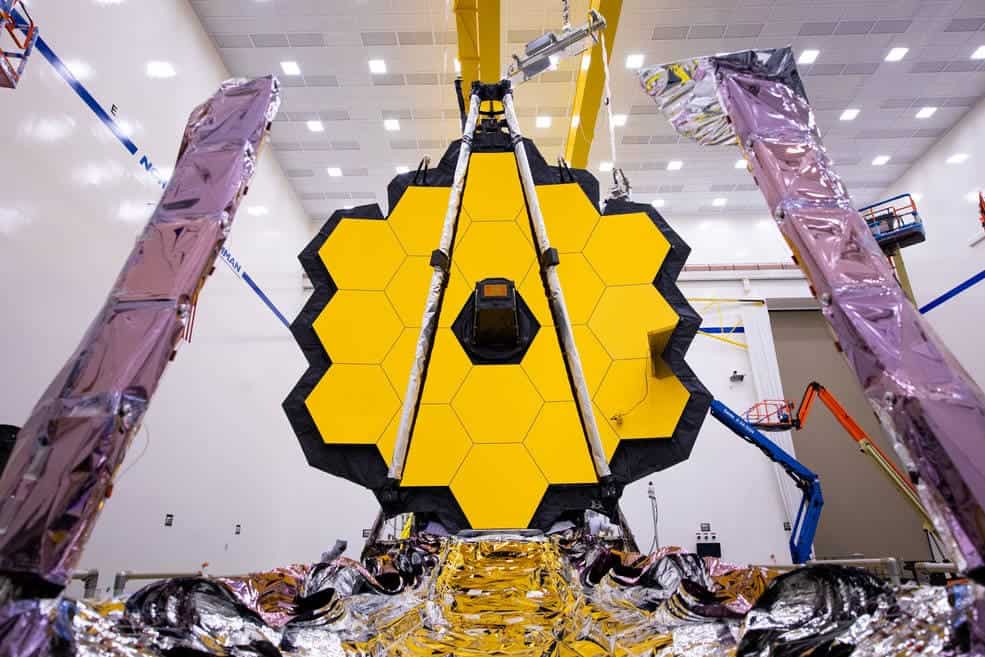An international team of astronomers has discovered a nearby exoplanet orbiting a red dwarf star that is perfect for deeper investigation. In particular, this exoplanet could be a prime target for precise atmospheric measurements, something that, for planets outside the solar system, has so-far eluded astronomers.
The team’s findings documenting the discovery of this relatively close super-Earth–so-called because they have a mass greater than our planet but still lower than planets like Uranus and Neptune which are classified as ‘ice giants’–are published in the latest edition of the journal Science.
The team discovered Gliese 486 b whilst surveying 350 small red dwarf stars for signs of low-mass planets using the CARMENES spectrograph mounted on the 3.5m telescope at the Calar Alto Observatory telescope, Spain. The exoplanet was found due to the ‘wobble’ it caused in the orbit of its parent star.

“Our team is searching primarily for Earth-like and super-Earth planets orbiting nearby stars. In this case, we have found a nearby super-Earth, just 26 light-years away orbiting a small star every 1.5 or so Earth days,” Karen Collins, an astronomer at the Center for Astrophysics, Harvard & Smithsonian, and a co-author on the paper tells ZME Science. “We were certainly excited to have found a transit signal in the light curve of a star that is so close to the Sun in astronomical terms.
“We quickly realized that Gliese 486 b, with radial velocity mass measurements in hand, would likely become a prime target for additional detailed follow-up studies, particularly atmospheric investigations.”
Karen Collins, Center for Astrophysics, Harvard & Smithsonian
These investigations could include searching for the conditions necessary for life, or even for biomarkers left behind by simple lifeforms.

Colins continues by explaining that it is Gliese 486 b’s proximity–it is the third closest transiting exoplanet yet to be uncovered– that, amongst other things like its temperature, makes it a good candidate for more in-depth study. “Because Gliese 486 b is so close to the solar system, relative to most known transiting exoplanets, we may be able to probe the atmosphere of the planet using the upcoming James Webb Space Telescope and possibly other telescopes,” she explains.
That is, of course, if it actually has an atmosphere.
What We Know About Gliese 486 b So Far…
Whilst the team of astronomers may not yet be certain that Gliese 486 b has an atmosphere, there are some things that they do know about the exoplanet and its red dwarf home star.

temperature of about 700 Kelvin (430 °C), Gliese 486b possibly has an atmosphere (Render Area)
“It is only about 30% larger than Earth but has a mass of about 2.8 times that of our planet,” study author Trifon Trifonov, Max Planck Institute for Astronomy, explains to ZME Science. The researcher adds that models suggest that the exoplanet’s composition is similar to Venus and Earth, including a metallic core. “Anyone standing on Gliese 486 b would feel a gravitational pull that is about 70% stronger than what we experience on Earth.”
In addition to being denser than the earth, Gliese 486 b is also much hotter according to Trifon. This is because the exoplanet revolves around its host star on a circular orbit every 1.47 days, with one side permanently pointing towards its parent star.
“The proximity to the red dwarf Gliese 486 heats the planet significantly, making its landscape hot and dry, interspersed with volcanos and glowing lava rivers,” Trifon says. “There are quite a few super-Earth type exoplanets already discovered. All of these exoplanets are exceptional on their own. In this context, the physical characteristics of Gliese 486 b are not uncommon. However, the proximity of Gliese 486 b, allowed us to measure its mass with unprecedented precision, thanks to observations done with the CARMENES and the MAROON-X instruments.”
From the information the astronomers do possess regarding Gliese 486 b, especially its mass, Collins adds that the clues it also has an appreciable atmosphere are in place.
“Because we do know that the planet surface gravity is relatively high–about 70% stronger than Earth–we believe that there is a chance the planet may have retained an appreciable atmosphere.”
Karen Collins, Center for Astrophysics, Harvard & Smithsonian
Atmospheric Investigations
Using NASA’s Transiting Exoplanet Survey Satellite (TESS) spacecraft the astronomers were able to deduce that Gliese 486 b periodically crosses the stellar disk of its parent red dwarf star, a rare and fortuitous event.
“For transiting planets like Gliese 486 b, we have two primary methods to probe the atmospheres, if they exist,” Collins continues. “Transit spectroscopy allows us to study the planet’s atmosphere as the planet passes in front of the star from the telescope’s perspective.”
Collins says that should the exoplanet possess an atmosphere part of the light from its parent star that reaches our telescopes will have been filtered through this. This means that the light profile filtered by the atmosphere can be compared to an unfiltered version when the planet is not in front of the star.”By comparing the in-transit spectrum of the star with a spectrum of the star when the planet is not transiting, we can isolate atmospheric signals from the planet and possibly detect some of the components of the atmosphere.”

The second method detailed by Collins involves the detection of radiation directly from an exoplanet’s hot surface as it occupies different orbital phases across the star’s face. The emission spectrum that gives this technique its name–emission spectroscopy–reveals characteristic traits that indicate the presence of certain elements emitting and absorbing light in the exoplanet’s atmosphere.
“Its temperature of around 700 Kelvin makes it suitable for emission spectroscopy and phase curve studies in search of an atmosphere,” adds Trifonov.
The Golden Age of Exoplanet Science
Concluding our interview I ask Collins and Trionov if we are entering a ‘Golden Age’ for exoplanet science. They are both quick to correct me. “I would say we are living in it!” Trinov exclaims. “During the past three decades, astronomers have discovered thousands of exoplanets, and the number is increasing daily.
“Every day, we enhance our knowledge about the physical properties of exoplanets, their formation, and evolution.”
Trifon Trifonov, Max Planck Institute for Astronomy

Collins is equally assured that exoplanet science is in its prime, but adds that there is no decline in sight. “Frankly, I believe we have been in the golden age of exoplanet science for over a decade now,” the astronomer says. “Even so, with the advent of TESS to discover and measure the size of nearby small transiting planets, precise radial velocity machines like that of the CARMENES consortium and the MAROON-X instrument to measure their masses, and soon the James Webb Space Telescope to investigate their atmospheres, it’s fair to say that we are entering the golden age of well-characterized small planet exoplanet science.”
And Collins is clear how lucky she regards herself for just being involved with astronomy at this crucial juncture in its history. “I am excited to be involved in the search for and characterization of Earth-sized and Super-Earth planets such as Gliese 486 b,” says explains enthusiastically. “Precise atmospheric measurements are likely around the corner! What will this relatively new scientist from a small but progressive astrophysics program at a school in Kentucky be involved with next? Will we soon discover an Earth twin with an Earth-like atmosphere or even signs of life in an atmosphere?
“It is almost as if I’m living in a series of Star Trek. I can’t wait to see what we discover next!”
Karen Collins, Center for Astrophysics, Harvard & Smithsonian


